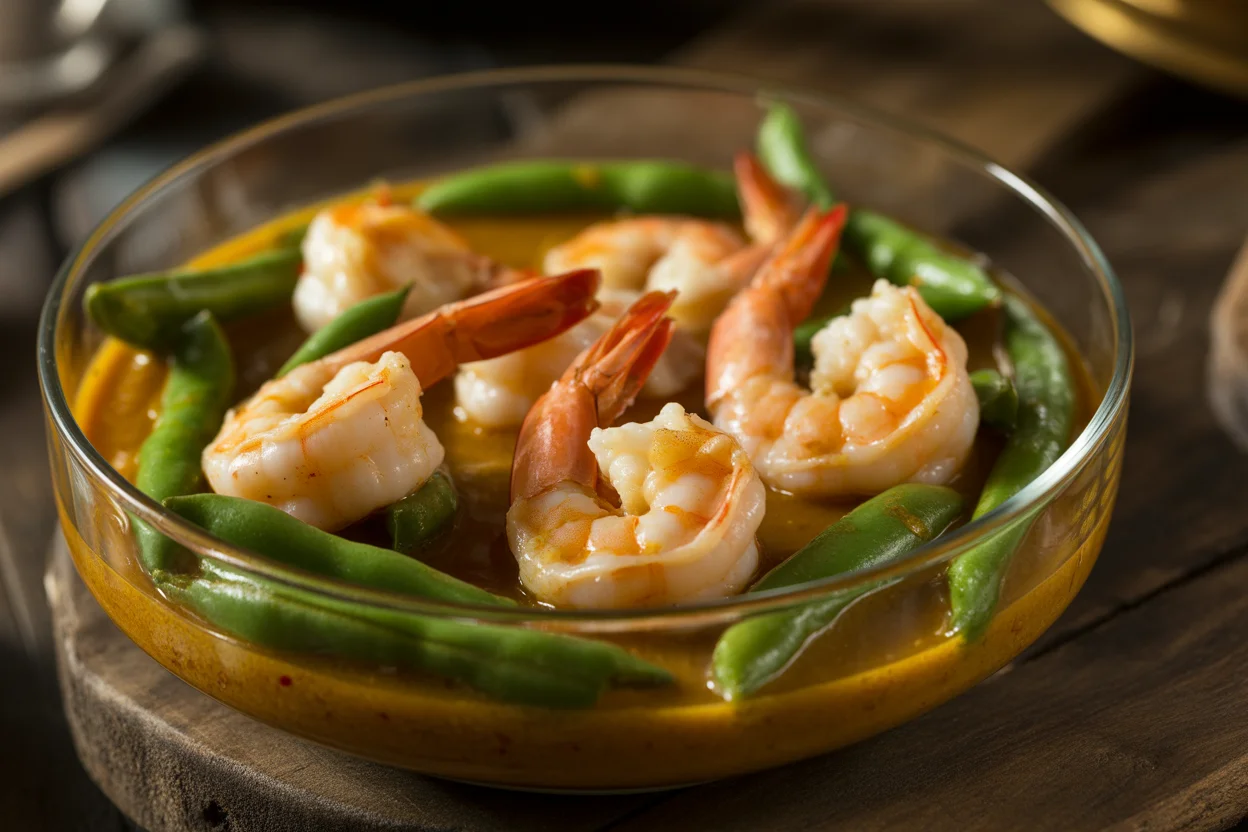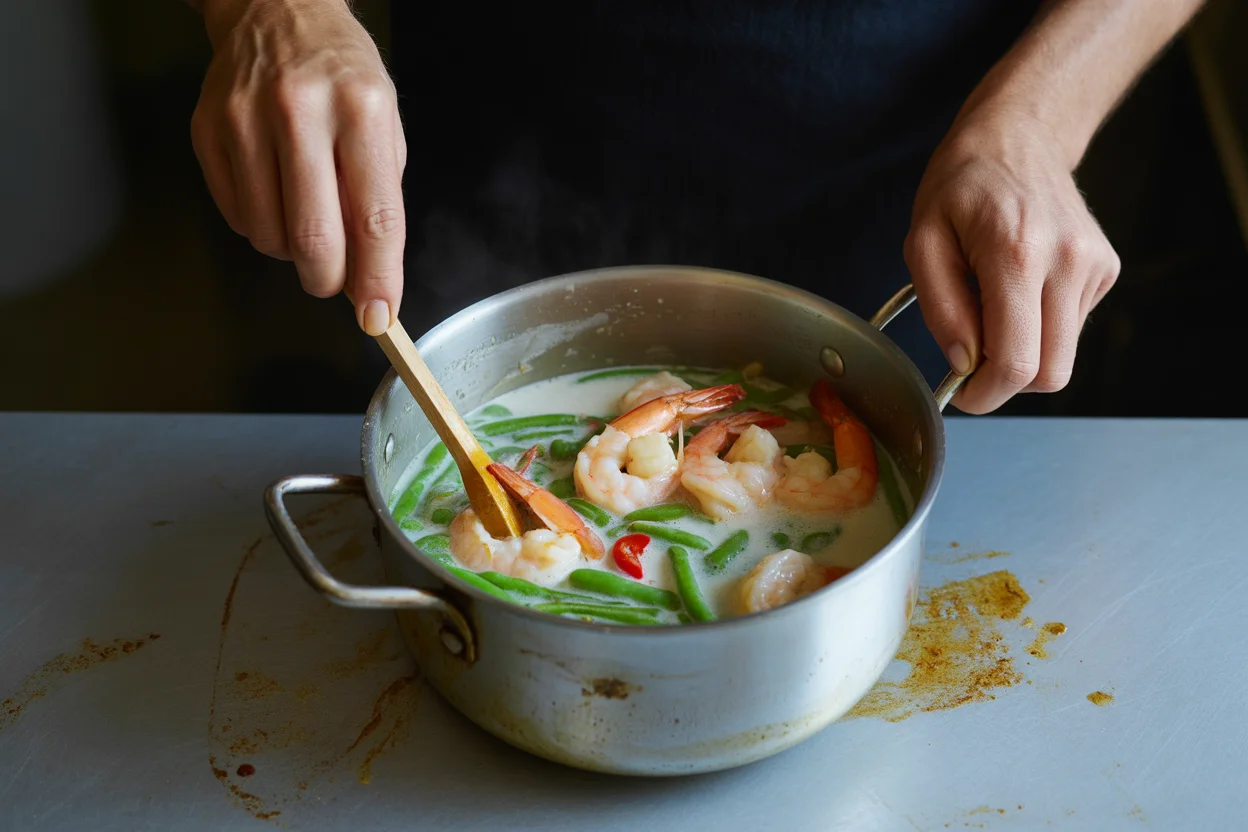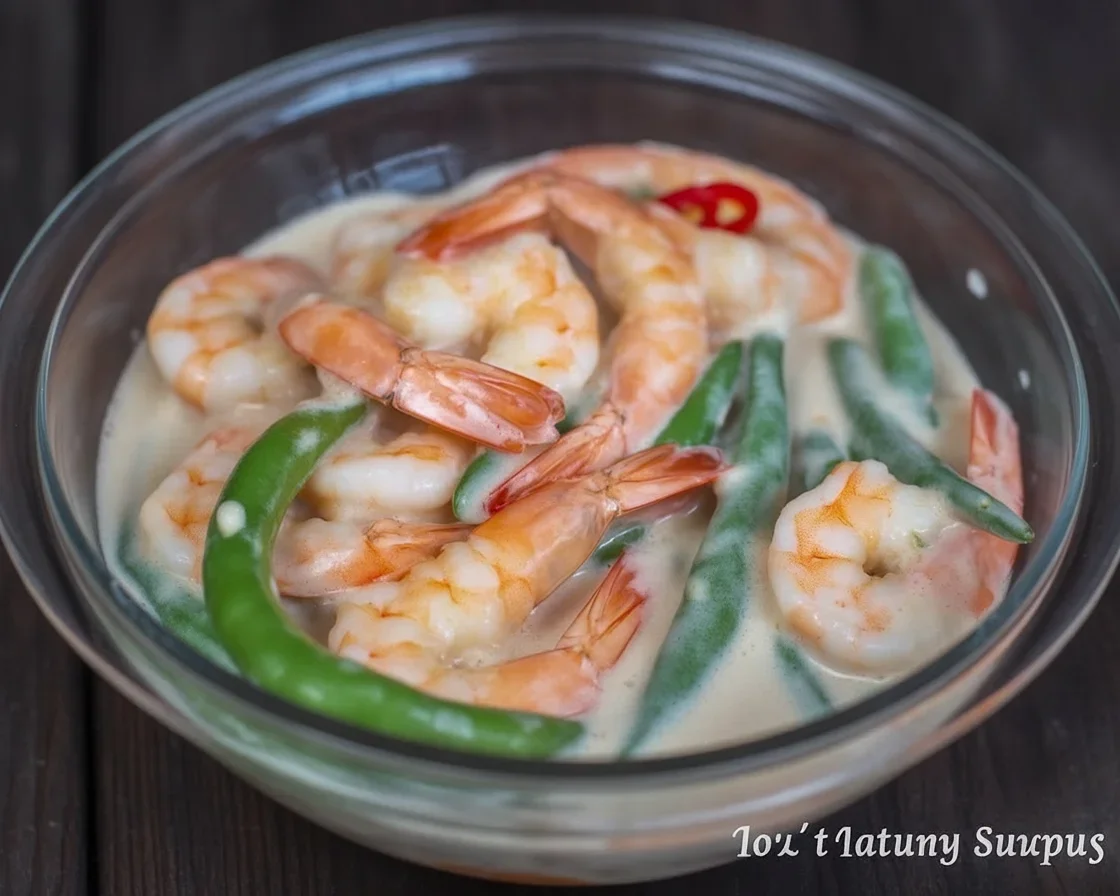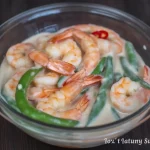Ever get that wild craving for something creamy, comforting, and just packed with fresh seafood flavor? Filipino ginataang hipon pops into mind every time for me. It’s that dish you think about at 2 pm and can’t get out of your head until dinner. Honestly, when I’m burnt on grilling or tired of adobo for the tenth time, ginataang hipon jumps to the rescue. This easy shrimp in coconut milk recipe basically tastes like home—and not too fancy either, just noodle-quick and friendly for lazy cooks. Need more family-friendly meals? Check out these kid-approved Filipino recipes. Messy hands? No problem. This is the kind of recipe you’ll want to dig into, pinkies up or not. 
Overview of ginataang hipon
Let’s talk basics for a second. Ginataang hipon translates to shrimp (hipon) cooked in coconut milk (gata). It’s one of those classic Filipino dishes, you know, the kind that fools you into thinking it took hours to make—when, honestly, even my college self could whip it up during finals week.
What makes it magic? Easy: fresh shrimp, creamy coconut milk, and just enough chili to warm up your soul—but not burn your tongue off, unless you want that. Usually, the sauce gets all thick and saucy, clinging to every shrimp like it’s got something to prove. You can add your own twists—throw in squash or string beans if you like veggies. My Lola says ginataang just means “swimming in coconut dreaminess.” If you’re trying out Filipino food for the first time, start with this. It’s way easier than making pancit or kare-kare, trust me! 
Cleaning shrimp
Okay, time for a quick kitchen gab: cleaning shrimp. I know, everyone pretends they know how, but you never really master it until your fingers smell like the ocean (in a good way).
So! Always rinse the shrimp first. If you’re using head-on shrimp, they look dramatic (and have more flavor). Just snip off the sharp bits on the head and tail; those can poke you, so watch out. Peeling is optional. I usually leave shells on—they lock in flavor, but you’ll have to get messy later. Using a toothpick or tip of a knife, a little patience goes a long way to remove the vein. My tita uses a bamboo skewer and swears by it.
Last tip: Pat your shrimp dry with paper towels before cooking. Trust me, water and hot oil are not friends! 
Tried this after a friend’s potluck—and whoa, it’s now my favorite shrimp recipe. Even my picky youngest cleaned his plate! – Marissa, mom of three.
Cooking coconut milk sauce
Here’s my not-so-secret guilty pleasure: I could eat just the coconut sauce on a bowl of rice and call it a night. The trick is to use thick coconut milk (first press, if you wanna impress your in-laws). Pour the coconut milk in a pan, and don’t rush it—medium heat, not blasting hot. Let it bubble gently so it can thicken.
I sauté garlic, onion, and maybe ginger first if I’m feeling fancy. It smells like heaven already! Once they’re golden, pour in the coconut milk. Don’t forget a bit of fish sauce or salt. Like, don’t be stingy with the flavor boosters—Filipino food is never boring. Oh, and don’t walk away. Coconut milk can split if it boils too hard. I have burned it before, and scraping burnt coconut from a pan is less fun than stepping on a Lego.
Once that sauce simmers and gets creamy? Pop in your cleaned shrimp. Cook them till pink, just a few minutes or they’ll turn rubbery. Some folks add a chili pepper for simmering heat. Go wild if you like it spicy.
Adding vegetables
Okay, veggies. This one’s polarizing in my family. Some only want shrimp, nothing else. But loading it up with sitaw (long beans) or chunks of kalabasa (squash) is actually pretty incredible—and makes the dish more filling.
I add my veggies after the coconut milk has thickened up a bit, but before the shrimp goes in. Beans need a few minutes to get tender; squash needs longer, so I slice it thin. Basically, put harder veggies first. Soft green veggies last. This is less science and more “poke it with a fork until it feels right.”
I even sometimes toss in eggplant or kangkong if I’ve got random stuff in the fridge. Filipino ginataang hipon is secretly a fridge-clean-out miracle.
You can stretch this dish for a crowd by adding lots of veggies—my kids hardly notice they’re eating greens!
Serving hot
Nothing kills the mood like cold coconut milk, so serve this piping hot. I like piling the ginataang hipon straight onto hot white rice (sometimes garlic rice—go big or go home, yeah?). If there’s leftover sauce, don’t waste it! Spoon it over garlic fried rice or even a fried egg.
Here are a few tweaks to thrill everyone at your table:
- Squeeze a bit of calamansi, or lemon if that’s what’s on hand, over the top before eating.
- Serve with a side of spiced vinegar for dipping, especially if you kept those shrimp shells on.
- Top with a sprig of green onion for some crunch (optional, lazy cook move).
You’ll see—once you ladle out the ginataang hipon, people will know it’s a celebration, even if it’s just Tuesday.
Regional notes
Different provinces do ginataang hipon their own way. In Bicol, expect it spicier, with slices of red or green chilies kicking up the heat. Some families use native coconut cream, and you can really feel the difference. Sorsogon folks love adding crab or small shells right in.
I’ve even heard tales of using ubod (heart of palm) in ginataan versions near Batangas. In Manila, you’ll often find the basic version, with shrimp and whatever leftover veggies grandma didn’t hide. It’s the dish that shows up for every birthday lunch or unplanned Sunday get-together.
I love how Filipino ginataang hipon winds up a reflection of home—simple, but with surprises depending where you grew up.
Never realized how different ginataang hipon tasted until I traveled—everywhere had their own touch but all were delicious.
Flavor tips
Wanna know my honest tricks? Don’t skimp on the aromatics—garlic, onion, ginger should always be fresh for max flavor. Also, real coconut milk beats canned for that just-picked nutty sweetness, but hey, use what you can get. If you want extra creamy, sneak some coconut cream in for the last five minutes.
A few drops of fish sauce or a splash of patis makes the dish pop, but if you’re sodium-sensitive, just go easy. Oh, and if you really like heat, go for siling labuyo. Respect—my dad eats it with his eyes watering!
Taste as you go—your tongue knows what’s good before your brain catches up. And, if you serve leftovers, the flavors marry overnight, making the ginataang hipon even better the next day. I swear by it.

When it comes down to comfort food, this Filipino ginataang hipon shows up bigtime: easy, flexible and loaded with coconut flavor. Throw in your favorite greens, keep the shells or not, and experiment. For more ideas, I love the take on Ginataang Hipon na may Sitaw at Kalabasa – Panlasang Pinoy, and if you’re pondering a version with more veggie heft, check out Ginataang Hipon & Kalabasa. Lastly, for that extra push, this iconic Ginataang Hipon Recipe details even more technique. Try this once and you’ll probably cook it forever—I mean, why wouldn’t you?
Ginataang Hipon
Ingredients
For the Shrimp
- 1 kg fresh shrimp Peel and clean before cooking.
For the Coconut Sauce
- 1 can thick coconut milk Use first press for better flavor.
- 2 cloves garlic, minced Fresh garlic recommended.
- 1 medium onion, chopped Onion adds sweetness.
- 1 tbsp fish sauce Enhances flavor.
- 1 tbsp salt Adjust to taste.
- 1-2 pieces chili peppers Optional for spice.
For the Vegetables
- 1 cup sitaw (long beans), cut Add towards end for tenderness.
- 1 cup kalabasa (squash), cubed Needs longer cooking, add early.
- 1 cup eggplant, sliced Use any leftover veggies.
Instructions
Preparation
- Clean the shrimp by rinsing and removing the vein if desired. Pat dry.
- Chop the vegetables and prepare ingredients for the sauce.
Cooking
- In a pan, sauté garlic and onion in oil until golden.
- Pour in the thick coconut milk and let it simmer on medium heat.
- Add salt and fish sauce to taste.
- Once the sauce thickens, add the squash and long beans first. Cook for a few minutes.
- Then, add the shrimp and cook until they turn pink.
- Adjust seasoning and add chili peppers if desired.
Serving
- Serve ginataang hipon hot over a bed of rice.
- Optionally, squeeze calamansi or lemon over the top and serve with spiced vinegar.

